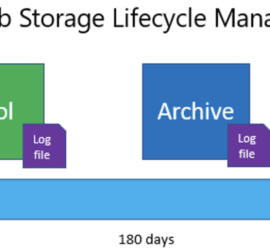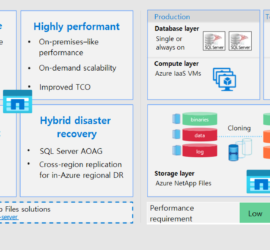In the ever-evolving digital landscape, efficient data storage is paramount. Microsoft Azure offers a comprehensive suite of storage solutions, each with unique capabilities designed to meet diverse business needs. To harness the full potential of Azure Storage, it’s crucial to understand and implement optimisation techniques. This guide will delve deeper into advanced concepts to help you maximise performance, cost-efficiency, and scalability. The Importance of Optimising Azure Storage Optimising Azure Storage is essential for several reasons: […]
Updated on June 2024 When it comes to cloud-based file storage solutions, Azure offers two robust options: Azure Files and Azure NetApp Files. Both services cater to different needs and workloads, offering unique features and benefits. In this blog post, we’ll delve into the core differences between these two services, explore advanced concepts, and help you decide which solution might be best for your specific use case. Azure Files: Simplified Cloud File Storage Azure Files […]
Azure Storage Lifecycle Management is a feature designed to manage and automate the movement and deletion of data within Azure Storage accounts. By defining rules, you can optimize storage costs and ensure that data is stored in the appropriate access tiers based on its usage. This guide will explore the core features, benefits, and provide a practical use case to illustrate how Azure Storage Lifecycle Management can be utilized effectively. Core Features of Azure Storage […]
Updated – June 2014 Azure Storage Accounts provides a scalable, secure, and high-performance storage solution for various types of data in the cloud. This guide will cover the different types of Azure Storage Accounts, the types of data they support, access tiers, and cost/pricing considerations. Types of Azure Storage Accounts 1. General-purpose v2 (GPv2) General-purpose v2 (GPv2) Storage Accounts offer the latest Azure Storage features, including support for all storage services such as Blob, File, […]
Updated – April 2024 Azure Front Door is a global, scalable, and secure entry point for delivering high-performance web applications. It acts as a Layer 7 load balancer that provides advanced traffic management, security features, and performance optimization. This guide will cover the core features, benefits, and a detailed use case demonstrating Azure Front Door in action. Core Features of Azure Front Door 1. Global Load Balancing Azure Front Door distributes incoming network traffic across […]
Azure Cosmos DB is a globally distributed, multi-model database service designed to provide high availability, low latency, and seamless scalability. It is built to handle mission-critical workloads and offers comprehensive SLAs for throughput, latency, consistency, and availability. This guide will explore the core features of Azure Cosmos DB, including its global distribution, consistency models, and high availability capabilities. What is Azure Cosmos DB? Azure Cosmos DB is a fully managed NoSQL database service that supports […]





